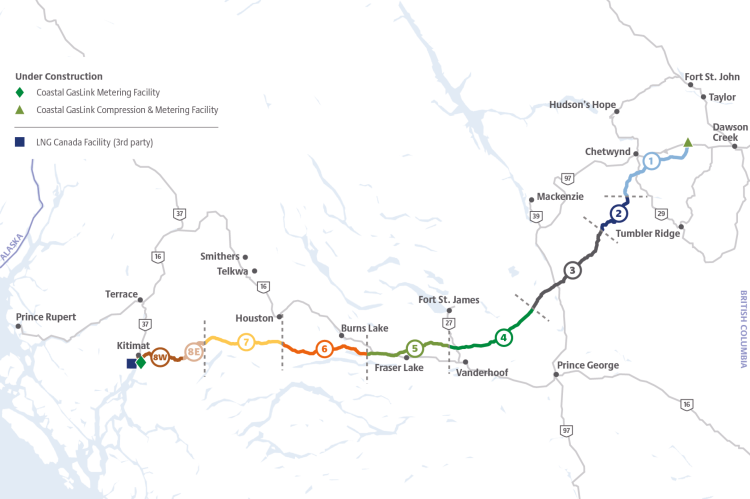Coastal Gaslink Pipeline Enters Next Phase, Focus on Cleanup and Reclamation in 2024

The Coastal GasLink pipeline, spanning 670 kilometers from Dawson Creek to Kitimat, has transitioned to its next phase after officially completing construction in October.
While gas has not yet been delivered to the LNG Canada facility, the focus has now shifted to cleanup, re-vegetation, and reclamation efforts.
"Coastal GasLink is technically in operations," public affairs advisor for TC Energy, Heather Desarmia, said during the Peace River Regional District board meeting on December 8th. With workforce accommodation structures being demobilized by the end of December, erosion and sediment control work will occur across 140 kilometers this winter.
The project, a decade in the making, marks a significant milestone for Canada's natural gas industry. "This is the first time Canadian natural gas will reach coastal waters and touch the global marketplace," Desarmia emphasized.
TC Energy estimates that Coastal GasLink exports could reduce global CO2 emissions by 60 to 90 million tons annually, surpassing even British Columbia's total emissions. Additionally, the project has generated substantial economic benefits, creating over 25,700 jobs, contributing $3.2 billion to BC's GDP, and earning $331 million in tax revenue.
However, the project's initial cost estimate of $6.2 billion has ballooned to $14.5 billion. The processed gas, destined primarily for Asian markets, will be transported through TC Energy's extensive network, which supplies 25% of North America's daily natural gas and 20% of western Canada's oil shipped to the U.S. and Gulf Coast, powering an estimated four million homes.
With additional permitting required for six compressor stations and modifications at both the Wilde Lake and Kitimat sites, the Coastal GasLink pipeline's journey is far from over. As the project enters this next phase, its impact on the environment, global energy markets, and British Columbia's economy will continue to be closely monitored and debated.
